
95% of researchers rate our articles as excellent or good
Learn more about the work of our research integrity team to safeguard the quality of each article we publish.
Find out more
ORIGINAL RESEARCH article
Front. Phys. , 28 October 2022
Sec. Optics and Photonics
Volume 10 - 2022 | https://doi.org/10.3389/fphy.2022.1043053
This article is part of the Research Topic Optical Solitons View all 5 articles
Non-degenerate rogue waves (RWs) and multiple transitions between RWs and solitons arising from vector three-wave resonant interaction are studied analytically and numerically. In contrast to the conventional degenerate RWs, such non-degenerate RWs consist of two fundamental RWs each with individual Lax spectral parameter. We show distinctive continuous transitions from bright (dark) RWs to four-petal RWs to dark (bright) solitons as the relative frequency between the wave components increases. The underlying mechanism of such processes is the non-monotonic variation of the energy exchanges between different components of the waves. We further reveal the transition dynamics of non-degenerate RWs. Finally, we confirm numerically the robustness of the transition dynamics in the presence of spontaneous modulation instability induced by white noise. Our results provide insights into the RW formation and the multiple transitions in systems with three-wave resonant interaction, and may offer the possibility of experimental observations in multi-component resonant processes.
Three-wave resonant interaction (3WRI) enjoys a prominent status in various branches of nonlinear science [1–7]. It involves the simplest and lowest-order wave-wave coupling in weakly nonlinear and dispersive media [8–15]. The 3WRI has been extensively studied alongside with the development of nonlinear optics, since it applies to laser-plasma interaction [2], group-velocity pulse control [14, 16–19], ultrashort pulse train generation [7, 20], and frequency conversion [21].
The mathematical model that describes such interaction is commonly based on a coupled set of evolution equations [1, 22]. An integrable version of the latter was established in the early 1970s [1]. Just as the celebrated nonlinear Schrödinger equation (NLSE), an important point is that the integrable 3WRI system admits various exact localized wave solutions in analytic form. These contain the resonant solitons [1, 13–15, 20] as well as the “breathing waves” such as breathers [23, 24] and rogue waves (RWs) [23–28]. Physically, these localized waves correspond to different nonlinear excitations [29, 30]. Recently, significant progress has been made on the 3WRI solitons and RWs. In particular, the 3WRI velocity-locked solitons have been confirmed in both theory and experiment [14, 15], and the existence of fundamental and high-dimensional RWs has been predicted in theory recently [25–27]. However, just as the scalar NLSE case [31–33], all existing 3WRI RWs are the conventional degenerate solutions. Namely, the RWs correspond to an identical spectral parameter of the associated Lax pair [25, 26, 28]. Recently, a new type of RWs—nondegenerate RWs—has been demonstrated in the coupled NLSEs accounting for the dynamics of vector waves in weak resonant processes [34]. Such non-degenerate RWs consist of different fundamental RWs each with individual Lax spectral parameter. This possibility arises from the internal integrable structure of the coupled NLSEs where the Lax pair is a multidimensional matrix. Just like the coupled NLSEs, the 3WRI equations also admit multidimensional (3 × 3) Lax matrix. Unlike the coupled NLSEs, the 3WRI equations are the fundamental model accounting for the dynamics of vector waves in strong resonant processes. It is therefore relevant to find out whether nondegenerate RWs exist in the 3WRI system.
On the other hand, as two different types of localized excitations, transitions between the 3WRI RWs and solitons remain completely unexplored. Transitions between different types of nonlinear waves in both the scalar and vector nonlinear systems have been a subject of extensive research. Recent studies have demonstrated that the transitions between RWs (or breathers) and solitons only exhibit a simple transition process—from bright (dark) RWs to bright (dark) solitons [35–37]. Namely, all these results are limited to a relatively simple single transition. It has been shown that such single transition describes a continuous process of RW elongation, which corresponds to the monotonic decay of modulation instability (MI) gain [36, 37].
In this paper, we demonstrate the existence of nondegenerate RWs in the 3WRI system, and reveal multiple transitions which are different from the single transition reported before [35–37]. The nondegenerate RWs consist of two fundamental RWs each with individual Lax spectral parameter. We present the existence diagram. We show that the multiple transitions are closely connected with the inherent energy exchange between different wave components of the 3WRI system. The latter is forbidden in the coupled NLSE case [38]. The robustness of all transition dynamics in the presence of spontaneous MI induced by white noise is confirm numerically.
The 3WRI equations describing the propagation of three coupled waves in a weakly dispersive nonlinear medium [1, 8, 9], can be written as, in dimensionless form,
where uj(t, z), j = 1, 2, 3 are the slowly varying electric field envelopes of the three waves. If z is the evolution variable, then this system is the well-known 3WRI equation [1] where the three characteristic velocities are 1/c1, 1/c2, and 0; otherwise, if the evolution variable is t, this system models the nonlocal interaction of two waves, that is the transformation
Due to the resonant conditions for the frequencies and momenta [8], the initial plane-wave background of Eq. 1 can be expressed as
where
with aj, kj, and q being the amplitudes, wavenumbers, and relative frequency of the vector plane-wave fields. The model (1) is integrable [1]. Namely, it admits various exact solutions. By solving the associated Lax pair (13), exact solutions describing localized nonlinear wave on the vector backgrounds (2) can be constructed by the Darboux transformation method [23]. The details are presented in Appendix. The first-order RW solutions
Here, the expressions of Ψ11, Ψ21 and Ψ31 as shown in the Supplementary Appendix S7.1. These solutions depend on the free parameters Aj and the spectral parameter λ. Solutions (3) describe RWs when one of Aj vanishes; otherwise, they describe the interaction between RWs and breathers when Aj ≠ 0.
The spectral parameter λ in Eq. 3 is one of the complex roots of the discriminant condition:
where
For simplicity, we set here a1 = a2 = a. The spectral parameter λ is given explicitly by
with
and η = a2 − 4q2. The special case of |q| = a/2 has to be neglected to avoid singular solutions in Eq. 3.
We stress that, the spectral parameter λ plays a key role in the dynamics of localized waves. Namely, the imaginary part of λ determines the existence condition of the waves, while the real part determines the wave structures. In particular, the sign of the imaginary part has no effect on the waveform; while the sign of the real part induces different waveforms.
Eq. 7 shows the variety of the spectral parameter λ. Namely, for any given initial parameters we have two spectral parameters λ+ and λ−. Such variety provides possibilities for new RW formation.
Figure 1 shows the evolution of the spectral parameter λ verse the relative frequency q. In the region |q| < a/2, both λ+ and λ− are purely imaginary (λ+r = λ−r = 0), and we have λ+i = −λ−i. Thus, RWs in this region are degenerate for any given a, q. Namely,
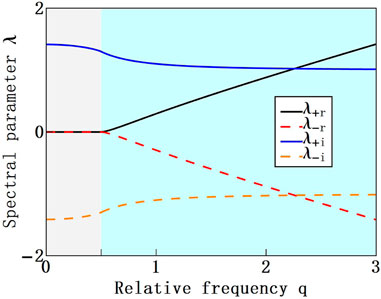
FIGURE 1. Evolution of the spectral parameter λ versus the relative frequency q. The gray and cyan areas correspond to the degenerate and non-degenerate regions, respectively. The parameters are a1 = a2 = a = 1.
Figure 2 shows the amplitude distributions of RWs in the degenerate and non-degenerate regions, respectively. As shown in Figure 2A, RWs with λ+ and λ− in the degenerate region |q| < a/2 are identical, namely,
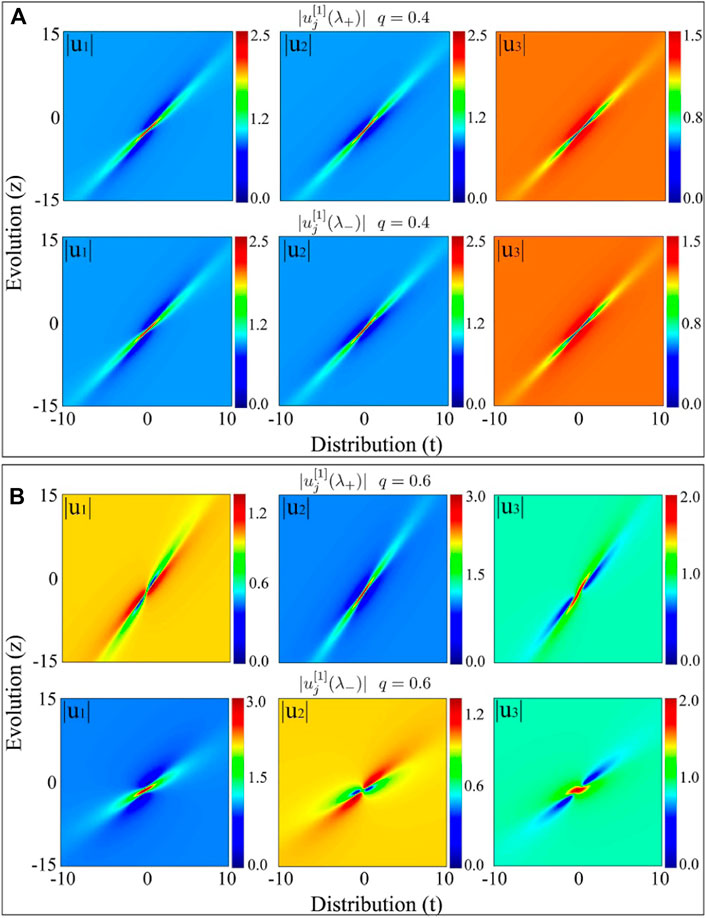
FIGURE 2. Amplitude distributions of RWs
However, in the non-degenerate region,
Another remarkable result is that such RWs can exhibit the soliton structure when q is large. As shown in Figure 3, the vector RWs (Figure 3A) transform themselves to the vector solitons (Figure 3B) when q changes from 0.4 to 2. A comparison between the RWs (shown in Figure 2) and the solitons (shown in Figure 3) reveals a distinct type of transition between the bright (dark) RWs and the dark (bright) solitons. Examples are shown in the case of
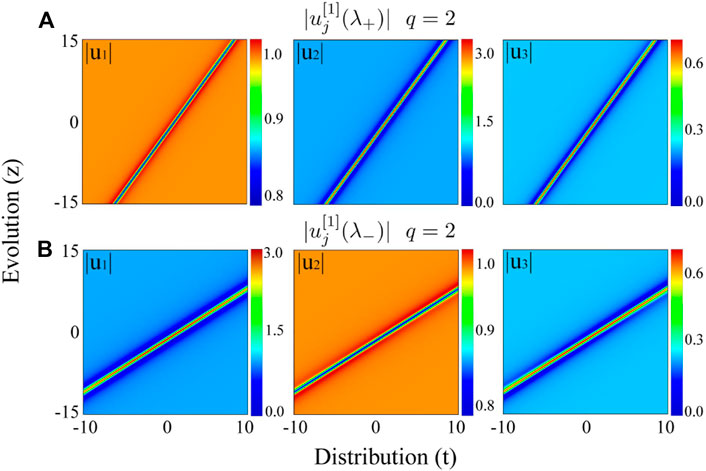
FIGURE 3. Amplitude distributions of solitons
To better understand the transitions shown above, we focus our attention on
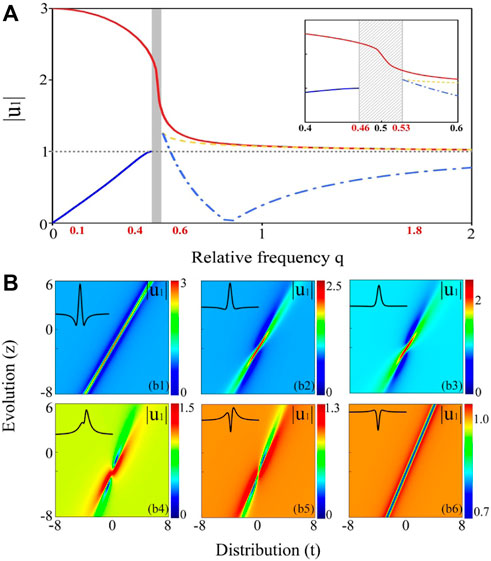
FIGURE 4. Characteristics of transitions on the certain range of frequency in the wave field
As can be seen, the structure of RWs is at first compressed then elongated with a continuously decreasing amplitude
Clearly, this transition process (a bright RW to a dark soliton) contains multiple wave states, namely bright RW [Figure 4 (b1)], four-petal RW [Figure 4 (b4)] and dark soliton [Figure 4 (b6)]. This stands in sharp contrast to the simple single transition reported before [35–37].
As shown in Section 3.1, for any given parameters in the non-degenerate region, there exist two different RWs. Let us consider whether such two RWs can coexist in the same plane wave. To answer this question, we proceed to construct the second-order RW solution in the non-degenerate region. The details are given by Supplementary Appendix S7.2. The solution is obtained by using the second-order iteration of the Darboux transformation with two spectral parameters {λ+, λ−}. Each spectral parameter corresponds to a RW. Thus, this solution describes the dynamics of the non-degenerate second-order RW. This higher-order RW solution is different from the degenerate multi-RWs presented before [25, 26].
Figure 5 shows the characteristics of non-degenerate second-order RWs with different q. To better analyze the variation of each RW structure, we have separated the RWs by the relative separations in both z and t, i.e., z1 = z − 1, t1 = t + 1, z2 = z + 1, t2 = t − 1. As can be seen from the figure, the second-order RWs (Figures 5A,B) have two different fundamental RWs. In particular, such two RWs can both transform into two solitons (Figure 5C). Interestingly, in either
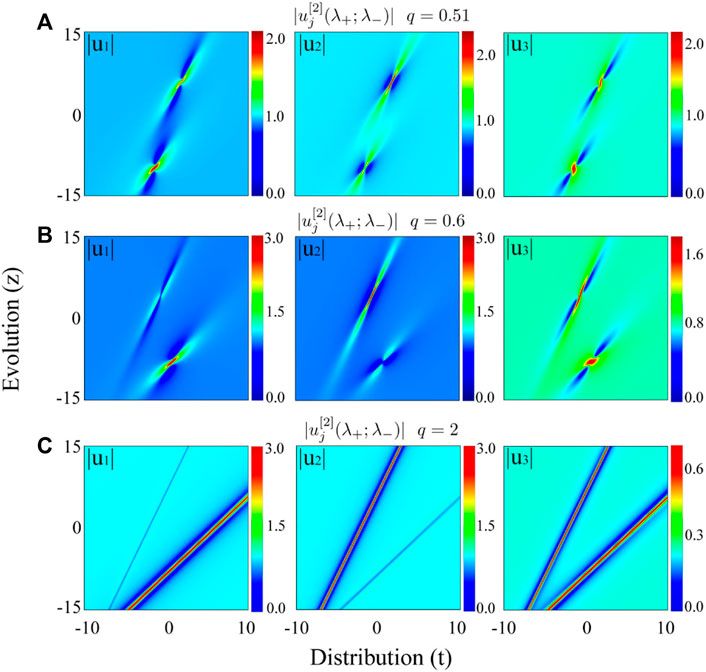
FIGURE 5. Amplitude distributions of non-degenerate second-order RWs,
In previous results, the mechanism of single state transitions is explained well by the MI analysis [35–37]. To better understand the multiple transition, we use here the combination analysis of the MI and the energy exchange between different wave components. The latter is an important physical quantity in 3WRI system that can be monitored in experiments. Such combination provides a solid interpretation for the transition mechanism.
We first pay attention to the standard modulation (linear) stability analysis. Adding a small-amplitude Fourier modes to the plane-wave solutions, we obtain
where fj and gj are small amplitudes, and the propagation parameters Ω and μ are assumed to be real and complex, respectively. A substitution of these perturbed plane-wave solutions into Eq. 1, followed by linearization yields the dispersion relation
Considering the condition of RW formation, namely, Ω → 0 [29, 30], we have the solutions of μ from Eq. 9 as follows
where μr denotes the real part, while
and
where ϖ = 3η2 + 18a2q2,
MI is described by the gain (growth rate). The latter is given by G1,2 = |Im{μ1,2}| ≠ 0. It means that small-amplitude perturbations suffer MI and grow exponentially as exp (Gx) at the expense of pump waves.
Note that there are two different forms of the MI gain, namely
On the other hand, the effective energy exchanges take place between the waves in different components. The effective energy has the form [25, 26].
For RWs with different spectral parameters λ±, we have Ej(λ±). In each case, one can verify that the effective energy obeys the relation E1 = E3 = −2E2.
Figure 6A shows the variations of both the MI gain
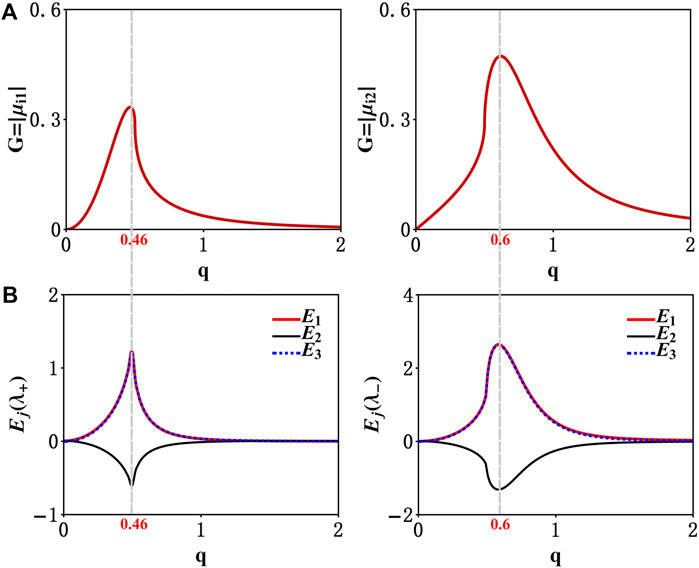
FIGURE 6. Non-monotonic variation of the MI gain (A) and effective energy (B) versus q, which can be obtained by Eqs 9, 11. Here the energy Ej (λ+) trend consistent with MI gain G = |μi1|, and the extreme point corresponds to the most localized structures RWs for q = 0.46. Another case of MI gain G = |μi2| corresponding to the energy changes Ej (λ−) that reaches an extreme at q = 0.6.
However, one should note that the two MI gains admit different maximums. For
Figure 6B shows the variations of the effective energy Ej (λ±) versus q. All effective energies exhibit non-monotonic variation. For u1 and u3, the effective energies E1 (λ±) and E3 (λ±) increase first and reach the maximums. They then decrease and approach to zero. However, the reverse process proceeds for E2 (λ±) in u2 wave component. This comes from the conservation law E1 + E2 = E2 + E3. A comparison between MI gains and the effective energy shows that the extreme point of Ej (λ+) is completely consistent with that of
Finally, we discussed the robustness of the RWs and their transition dynamics. This can be done numerically by adding random noise to the initial states. Such perturbed initial states read
where m is a small number denoting the amplitude of noise, uj (t, z = z0) denotes the exact vector solution at a certain distance z0.
Figure 7 shows the numerical results of the fundamental RWs (a) and the transformed solitons (b). We take the initial states from the exact solutions
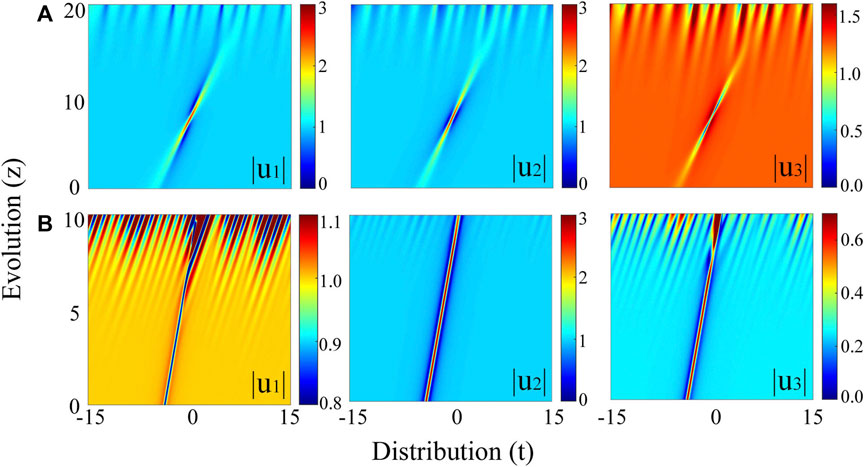
FIGURE 7. Numerical evolution of the transition between the fundamental RW (A) with q = 0.4 and soliton (B) with q = 2. The initial states are extracted from the exact solutions
Figure 8 shows the numerical results of the non-degenerate RWs (a) and the transformed solitons (b). The corresponding initial states are extracted from exact solutions
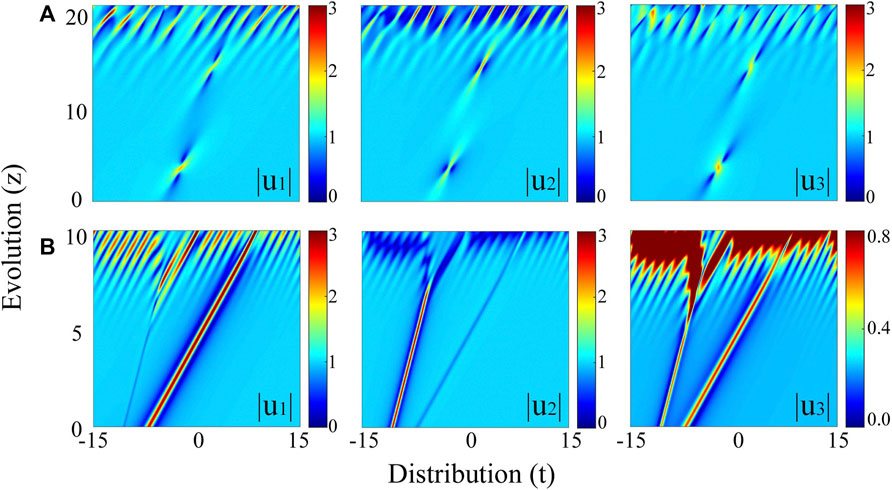
FIGURE 8. Numerical evolution of the transition between the nondegenerate RW (A) with q = 0.4 and (B) nondegenerate soliton with q = 2. The initial states are extracted from the exact solutions
We demonstrated the existence, transition, formation mechanism, and stability of the nondegenerate RWs in the 3WRI system, which have not been reported before. The nondegenerate RWs consist of two fundamental RWs each with individual Lax spectral parameter. We present the existence diagram. We show that the multiple transitions are closely connected with the inherent energy exchange between different wave components of the 3WRI system, which is forbidden in the coupled NLSE systems. As the 3WRI equations are the fundamental model accounting for the dynamics of vector waves in strong resonant processes, our results could provide insights into the 3WRI RW formation, and may offer the possibility of experimental observations in multi-component resonant systems. On the other hand, the RW is just the limiting case of a breather with infinite period. Just like recent advances in nondegenerate breathers in coupled NLSEs [42, 43], we expect that 3WRI nondegenerate breathers will play a key role in understanding wave dynamics in strong resonant processes.
The raw data supporting the conclusions of this article will be made available by the authors, without undue reservation.
CL conceived the ideal and wrote the first version of the manuscript. Y-HW presented the exact solutions of nonlinear excitations. All authors contributed to the physical analysis and revision of the manuscript.
This work is supported by the NSFC (Grants Nos 12275213, 12175178, 12004309, 12022513, and 12047502), the Major Basic Research Program of Natural Science of Shaanxi Province (No. 2017KCT-12), and the Natural Science basic Research Program of Shaanxi Province (Grant No. 2022KJXX-71).
The authors declare that the research was conducted in the absence of any commercial or financial relationships that could be construed as a potential conflict of interest.
All claims expressed in this article are solely those of the authors and do not necessarily represent those of their affiliated organizations, or those of the publisher, the editors and the reviewers. Any product that may be evaluated in this article, or claim that may be made by its manufacturer, is not guaranteed or endorsed by the publisher.
The Supplementary Material for this article can be found online at: https://www.frontiersin.org/articles/10.3389/fphy.2022.1043053/full#supplementary-material
1. Zakharov VE, Manakov SV. The theory of resonance interaction of wave packets in nonlinear media. Zh Exp Teor Fiz (1975) 69:1654–73.
2. Malkin VM, Shvets G, Fisch NJ. Fast compression of laser beams to highly overcritical powers. Phys Rev Lett (1999) 82(22):4448–51. doi:10.1103/physrevlett.82.4448
3. Lamb KG. Tidally generated near-resonant internal wave triads at a shelf break. Geophys Res Lett (2007) 34(18):L18607. doi:10.1029/2007gl030825
4. Burlak G, Koshevaya S, Hayakawa M, Gutierrez-D E, Grimalsky V. Acousto-optic solitons in fibers. Opt Rev (2000) 7(4):323–5. doi:10.1007/s10043-000-0323-3
5. Aubourg Q, Antoine C, Peureux C, Ardhuin F, Sommeria J, Viboud S, et al. Three-wave and four-wave interactions in gravity wave turbulence. Phys Rev Fluids (2017) 2(11):114802. doi:10.1103/physrevfluids.2.114802
6. Deike L, Berhanu M, Falcon E. Experimental observation of hydroelastic three-wave interactions. Phys Rev Fluids (2017) 2(6):064803. doi:10.1103/physrevfluids.2.064803
7. Cerullo G, De Silvestri S. Ultrafast optical parametric amplifiers. Rev scientific Instr (2003) 74(1):1–18. doi:10.1063/1.1523642
8. Degasperis A, Lombardo S. Multicomponent integrable wave equations: Ii. soliton solutions. J Phys A: Math Theor (2009) 42(38):385206. doi:10.1088/1751-8113/42/38/385206
9. Degasperis A, Conforti M, Baronio F, Wabnitz S, Lombardo S. The three-wave resonant interaction equations: Spectral and numerical methods. Lett Math Phys (2011) 96(1):367–403. doi:10.1007/s11005-010-0430-4
10. Franken PA, Hill AE, el Peters CW, Gabriel W. Generation of optical harmonics. Phys Rev Lett (1961) 7(4):118–9. doi:10.1103/physrevlett.7.118
11. Armstrong JA, Bloembergen N, Ducuing J, Pershan PS. Interactions between light waves in a nonlinear dielectric. Phys Rev (1962) 127(6):1918–39. doi:10.1103/physrev.127.1918
12. Zernike F, Berman PR. Generation of far infrared as a difference frequency. Phys Rev Lett (1965) 15(26):999–1001. doi:10.1103/physrevlett.15.999
13. Ibragimov E, Allan S. Second-harmonic pulse compression in the soliton regime. Opt Lett (1996) 21(19):1582–4. doi:10.1364/ol.21.001582
14. Baronio F, Conforti M, De Angelis C, Degasperis A, Andreana M, Vincent C, et al. Velocity-locked solitary waves in quadratic media. Phys Rev Lett (2010) 104(11):113902. doi:10.1103/physrevlett.104.113902
15. Degasperis A, Conforti M, Baronio F, Wabnitz S. Stable control of pulse speed in parametric three-wave solitons. Phys Rev Lett (2006) 97(9):093901. doi:10.1103/physrevlett.97.093901
16. Picozzi A, Haelterman M. Parametric three-wave soliton generated from incoherent light. Phys Rev Lett (2001) 86(10):2010–3. doi:10.1103/physrevlett.86.2010
17. Conforti M, Baronio F, Degasperis A, Wabnitz S. Inelastic scattering and interactions of three-wave parametric solitons. Phys Rev E (2006) 74(6):065602. doi:10.1103/physreve.74.065602
18. Taranenko YN, Kazovsky LG. Three-wave envelope solitons: Can the speed of light in the fiber be controlled. IEEE Photon Technol Lett (1992) 4(5):494–7. doi:10.1109/68.136498
19. Taranenko NL, Kazovsky LG, Taranenko YN. Three-wave envelope solitons: Possibility of controlling the speed of light in fiber. J Lightwave Technol (1994) 12(7):1101–11. doi:10.1109/50.301801
20. Baronio F, Conforti M, Degasperis A, Wabnitz S. Three-wave trapponic solitons for tunable high-repetition rate pulse train generation. IEEE J Quan Electron (2008) 44(6):542–6. doi:10.1109/jqe.2008.917970
21. Conforti M, Baronio F, Degasperis A, Wabnitz S. Parametric frequency conversion of short optical pulses controlled by a cw background. Opt Express (2007) 15(19):12246–51. doi:10.1364/oe.15.012246
22. Romanova NN, Yu Annenkov S. Three-wave resonant interactions in unstable media. J Fluid Mech (2005) 539:57–91. doi:10.1017/s0022112005005665
23. Degasperis A, Lombardo S. Rational solitons of wave resonant-interaction models. Phys Rev E (2013) 88(5):052914. doi:10.1103/physreve.88.052914
24. Zhang G, Yan Z, Wen XY. Three-wave resonant interactions: Multi-dark-dark-dark solitons, breathers, rogue waves, and their interactions and dynamics. Physica D: Nonlinear Phenomena (2018) 366:27–42. doi:10.1016/j.physd.2017.11.001
25. Baronio F, Conforti M, Degasperis A, Lombardo S. Rogue waves emerging from the resonant interaction of three waves. Phys Rev Lett (2013) 111(11):114101. doi:10.1103/physrevlett.111.114101
26. Chen S, Baronio F, Soto-Crespo JM, Grelu P, Conforti M, Wabnitz S. Optical rogue waves in parametric three-wave mixing and coherent stimulated scattering. Phys Rev A (Coll Park) (2015) 92(3):033847. doi:10.1103/physreva.92.033847
27. Yang B, Yang J. Rogue waves in (2+1)-dimensional three-wave resonant interactions. Physica D: Nonlinear Phenomena (2022) 432:133160. doi:10.1016/j.physd.2022.133160
28. Chen S, Baronio F, Soto-Crespo JM, Grelu P, Mihalache D. Versatile rogue waves in scalar, vector, and multidimensional nonlinear systems. J Phys A: Math Theor (2017) 50(46):463001. doi:10.1088/1751-8121/aa8f00
29. Baronio F, Conforti M, Degasperis A, Lombardo S, Onorato M, Wabnitz S. Vector rogue waves and baseband modulation instability in the defocusing regime. Phys Rev Lett (2014) 113(3):034101. doi:10.1103/physrevlett.113.034101
30. Zhao LC, Ling L. Quantitative relations between modulational instability and several well-known nonlinear excitations. J Opt Soc Am B (2016) 33(5):850–6. doi:10.1364/josab.33.000850
31. Akhmediev N, Adrian A, Soto-Crespo JM. Fundamental rogue waves and their superpositions in nonlinear integrable systems. Nonlinear Guided Wave Opt A Testbed Extreme Waves (2017).
32. Akhmediev N. Waves that appear from nowhere: Complex rogue wave structures and their elementary particles. Front Phys (2021) 8:612318. doi:10.3389/fphy.2020.612318
33. Mihalache D. Localized structures in optical and matter-wave media: A selection of recent studies. Rom Rep Phys (2021) 73(2):403.
34. Liu C, Chen SC, Yao X, Akhmediev N. Non-degenerate multi-rogue waves and easy ways of their excitation. Physica D: Nonlinear Phenomena (2022) 433:133192. doi:10.1016/j.physd.2022.133192
35. Zhao LC, Li SC, Ling L. Rational w-shaped solitons on a continuous-wave background in the sasa-satsuma equation. Phys Rev E (2014) 89(2):023210. doi:10.1103/physreve.89.023210
36. Liu C, Yang ZY, Zhao LC, Yang WL. State transition induced by higher-order effects and background frequency. Phys Rev E (2015) 91(2):022904. doi:10.1103/physreve.91.022904
37. Liu C, Yang ZY, Zhao LC, Yang WL. Transition, coexistence, and interaction of vector localized waves arising from higher-order effects. Ann Phys (2015) 362:130–8. doi:10.1016/j.aop.2015.06.008
38. Yang J. Nonlinear waves in integrable and nonintegrable systems. Philadelphia, Pennsylvania, USA: SIAM (2010).
39. Degasperis A. Integrable nonlocal wave interaction models. J Phys A: Math Theor (2011) 44(5):052002. doi:10.1088/1751-8113/44/5/052002
40. Borgna JP, Degasperis A, Fernando De Leo M, Rial D. Integrability of nonlinear wave equations and solvability of their initial value problem. J Math Phys (2012) 53(4):043701. doi:10.1063/1.3699358
41. Liu C, Chen SC, Yao XK, Akhmediev N. Modulation instability and non-degenerate akhmediev breathers of manakov equations. Chin. Phys. Lett. (2022) 39:094201.
42. Che WJ, Chen SC, Liu C, Zhao LC, Akhmediev N. Nondegenerate kuznetsov-ma solitons of manakov equations and their physical spectra. Physical Review A (2022) 105(4):043526.
Keywords: three-wave resonant, non-degenerate rogue wave, state transition, modulation instability, energy exchange
Citation: Wu Y-H, Liu C, Yang Z-Y and Yang W-L (2022) Non-degenerate rogue waves and multiple transitions in systems of three-wave resonant interaction. Front. Phys. 10:1043053. doi: 10.3389/fphy.2022.1043053
Received: 13 September 2022; Accepted: 10 October 2022;
Published: 28 October 2022.
Edited by:
Yiqi Zhang, Xi’an Jiaotong University, ChinaReviewed by:
Dumitru Mihalache, Horia Hulubei National Institute for Research and Development in Physics and Nuclear Engineering (IFIN-HH), RomaniaCopyright © 2022 Wu, Liu, Yang and Yang. This is an open-access article distributed under the terms of the Creative Commons Attribution License (CC BY). The use, distribution or reproduction in other forums is permitted, provided the original author(s) and the copyright owner(s) are credited and that the original publication in this journal is cited, in accordance with accepted academic practice. No use, distribution or reproduction is permitted which does not comply with these terms.
*Correspondence: Chong Liu, Y2hvbmdsaXVAbnd1LmVkdS5jbg==
Disclaimer: All claims expressed in this article are solely those of the authors and do not necessarily represent those of their affiliated organizations, or those of the publisher, the editors and the reviewers. Any product that may be evaluated in this article or claim that may be made by its manufacturer is not guaranteed or endorsed by the publisher.
Research integrity at Frontiers

Learn more about the work of our research integrity team to safeguard the quality of each article we publish.